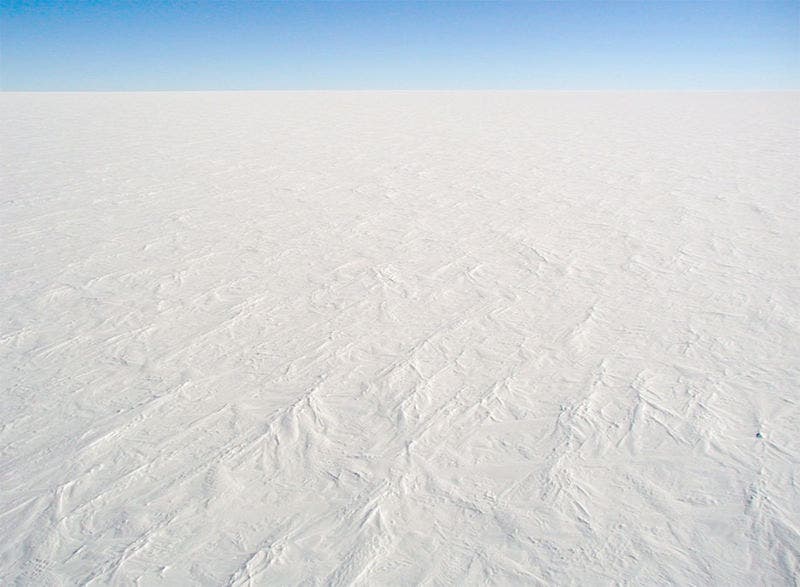
The barren and totally inhospitable East Antarctic Plateau is home to the coldest temperatures on the planet. And, as if this place wasn’t scary enough, scientists recently announced that their instruments indicate that it is, in fact, even colder than previously thought. What’s more, the new study suggests that the new record low corresponds with the limit of how cold it can get at Earth’s surface.
The white hell on Earth
In 2013, researchers reported that the coldest temperature on Earth is minus 93 degrees Celsius (minus 135 degrees Fahrenheit). However, an updated analysis using data gathered by NASA’s Terra and Aqua satellites and NOAA’s Polar Operational Environmental Satellites during the Southern Hemisphere’s winter between 2004 and 2016, came up with lower values. Turns out that this white hell can be as cold as minus 98 degrees Celsius (minus 144 degrees Fahrenheit) between 6 to 9 ft. (1.8 to 2.7 m) deep within the ice.
Because cold air is denser than warmer air, it gets pushed downward, into ice cracks and hollows. The most favorable conditions for the lowest temperature extremes were during clear winters skies and dry air. The latter significantly lowers the temperature because water vapor traps heat in the air, the authors wrote in the Geophysical Research Letters.
“In this area, we see periods of incredibly dry air, and this allows the heat from the surface of the snow to radiate into space more easily,” said Ted Scambos, a senior research scientist at the National Snow and Ice Data Center at the University of Colorado-Boulder, in a statement.
The lowest air temperature ever measured by a weather station is minus 89 degrees Celsius (minus 128 degrees Fahrenheit), which was recorded at Russia’s Vostok Station in July 1983. However, a weather station can only measure temperature in its vicinity, which is why scientists decided to use satellite observations to find even colder recesses on the East Antarctic Plateau than those recorded at Vostok.
But how cold can it get?
When the researchers analyzed their satellite data, they found clusters of snowy pockets where temperatures were at almost exactly minus 98 degrees Celsius over a 14-year period. This is strange considering that some were located hundreds of kilometers apart. The obvious explanation is that this is, in fact, the coldest it can get on the plateau.
In order for temperatures to drop to such ungodly lows, the weather needs to be within certain fixed conditions: the sky needs to be clear and the air must be bone-dry for days at a time. Past a certain threshold, the air cools so slowly that temperatures can’t drop any lower before the weather conditions change.
“There’s a limit to how long the conditions persist to allow it to cool to these ultra-low temperatures, and a limit to how much heat you can actually get through the atmosphere, because water vapor has to be almost nonexistent in order to emit heat from the surface at these temperatures,” he said.



